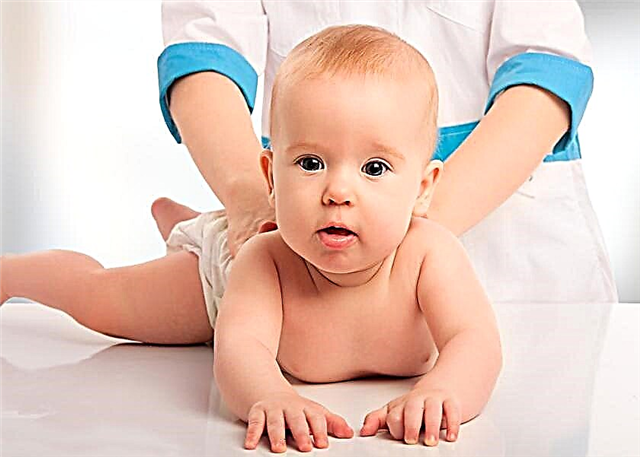
Every day of the baby's intrauterine life is a truly unique event. This article will tell you about the developmental characteristics of a baby at 27 weeks.
Anatomical features
To determine how fully the baby is growing, doctors use special ultrasound examination methods. When conducting such a study, the doctor can obtain the basic dimensions of an actively growing child.

The normal values of the determined indicators at each time period of pregnancy are different. The table below shows norms of the main clinical parameters of the fetal trunk, determined during fetometry.
In addition to determining how much the baby weighs and how long it is, using the same ultrasound examination, specialists can also see how the fetus looks. Modern devices, which are used for such types of research, allow you to get a fairly clear picture with the main features of the face of a child in the womb.
The main features of the baby's face by week 27 are already quite well formed. The ears are small and start to move slightly to the sides. The eyeballs on the outside cover the eyelids.

Small eyebrows grow over the upper edges of the child's eyes. The fetus has even formed small eyelashes. With each subsequent day of pregnancy, the baby becomes more and more cute. His skin gradually acquires a physiological color and becomes pale pink with a gray tint due to the original lubricant.
The child's body has many wrinkles. They appear mainly due to the fact that the fetus is in the aquatic environment all the time. Exposure to the amniotic fluid causes the skin to become wrinkled.
By the end of the second trimester of pregnancy, the baby is already becoming more plump. The change in its appearance is due to the fact that the amount of brown fat begins to actively increase under the skin of the fetus. It is necessary so that after birth, the child simply does not overcool. It is no coincidence that brown fat appears in the child's body - it is able to enter metabolism faster and, if necessary, give the child energy. That is why there is quite a lot of brown fatty tissue in the child's body.


The child's cheeks become more and more prominent every day. This feature is also largely due to the accumulation of brown fat in the child's body. The baby has characteristic dimples near the cubital fossa, as well as the first folds of fat on the body.
What does the baby feel?
The intrauterine development of the fetus by this period of pregnancy undergoes a number of features. The main vital internal organs of the baby are already formed, many of them even begin to function. Internal organs will be able to work in full mode only after the baby is born. In the meantime, such a mode of their work can be called "training".
By 26-27 weeks of pregnancy, the child's secretory organs show their efficiency. So, the concentration of some hormones in the baby's blood increases. Scientists have found that the fetus has already formed its own growth hormone, thyroxine, insulin and other important hormones. The pituitary gland, thyroid gland and pancreas are involved in their formation.

By the 27th week of pregnancy, the child's nervous system is already functioning quite well. A characteristic feature of this period is the active development of certain parts of the brain responsible for thinking and mental activity. Scientists have found that the total number of grooves and convolutions that give the cortex a specific striation continues to increase daily until the onset of labor.
Such a special structure of the "main computer" in the child's body contributes to the fact that every day, the fetus increases the number of reflexes that it needs for later life.
The intensive development of the organs responsible for the perception of various stimuli of the external environment contributes to the fact that the baby's feelings begin to change. By the 27th week of its intrauterine life, the baby is already able to experience quite a lot of different emotions.
The ability to hear
The perception of various sounds is a rather vivid sensation that the fetus is capable of experiencing at this time. The child can quite easily distinguish between parental voices. His mother's voice has a particular positive effect on him - it has been proven that the mother's voice has a relaxing effect on the baby.


With each subsequent day of pregnancy, the number of sounds perceived by the baby increases. In addition to the voices of its parents, the baby is also able to perceive sounds from the external environment. The baby can already hear the sound of a TV or radio. Of course, he still cannot make out the speech and the meaning.
The fetus distinguishes between sounds mainly in intensity and volume. So, excessively loud sounds can cause some discomfort to the baby. In this case, his mother will also feel a change in the child's mood rather quickly - the baby will begin to kick and move strongly.
An excellent option for spending time at this stage of pregnancy is reading fairy tales to your baby or listening to music. There is an opinion that the formation of a person's musical taste occurs precisely in the second trimester of pregnancy, therefore, it is possible to form musical preferences in a child quite consciously. For this, listening to the classics is best suited - it will definitely not cause negativity in the kid.
Natural sounds have a rather beneficial effect on the baby's body. Since the child himself is in the aquatic environment, he will enjoy the same water sounds - the sound of the surf or the peaceful murmur of a brook. Walking near natural reservoirs will have a beneficial effect on the child's body.

The ability to perceive light
At 27 weeks, the baby is able to open and close his eyes. During the period when the child is awake, his eyes are ajar. The light falling on the baby's face can elicit a response from him. So, scientists have conducted a number of scientific studies proving that the hit of bright light on the face of the fetus leads to the fact that he tries in every possible way to turn away from the rays.
Doctors believe that the baby's visual analyzer will really start functioning only after his birth. Long-term and very strong insolation contributes to the fact that the motor activity of the fetus increases.
Ability to define tastes
Before the onset of childbirth, a few more weeks, and the baby can already distinguish between tastes. Special microscopic outgrowths on the tongue - the papillae - help him in this. They are a kind of receptors that are responsible for the perception in the human body of various variants of taste.


Recognizes the taste of the baby's amniotic fluid when swallowed. During the day, he is able to swallow about 500-600 milliliters of liquid. Amniotic fluid enters the baby's digestive tract, where some nutrients are absorbed. The most important substance that enters the bloodstream in this way is glucose. Without it, the full development of the nervous system, in particular, the brain, is impossible.
The toddler, which is about the size of an average cauliflower, is already able to discern bitter, salty and sweet tastes. Swallowing a fairly large amount of amniotic fluid contributes to the fact that the fetus begins to hiccup. This manifestation of the baby's vital activity is quite normal and indicates the gradual development of the digestive system.
Ability to move
One of the most striking characteristic signs of week 27 is the rather intense motor activity of the fetus. The active movements of the child at this time can already be felt by his mother, and many women note that at the 27th week of pregnancy, the motor activity of their babies was quite pronounced. Such vivid sensations that a pregnant woman feels in her stomach is facilitated by the rather large size of the fetus.

The number of movements performed by the fetus increases significantly. To study his own body by the 27th week of intrauterine life, the baby is already bored, he is now more interested in the aquatic environment in which he is. Every day the child becomes interested in exploring the boundaries of the world, where he "lives" so far.
Such research interest leads to the fact that the child can push the walls of the uterus with his legs. Such shocks in her stomach are felt by a pregnant woman. Also, a curious fidget can touch the walls of the uterus with his own hands. Thrusts and movements in a pregnant woman can occur in various parts of her abdomen, this is affected by the location of the baby in the uterus.
It is important to note that the fetus is not active all the time during the day. The baby already has a circadian rhythm, that is, the ability to recognize day and night. During the day, the child is usually quite active, while at night he sleeps. Sleep in the fetus at this stage of its intrauterine development usually lasts at least 16-17 hours a day. Some babies can sleep even longer - up to 20 hours.
Motor activity is a very important criterion for assessing the condition of the fetus. So, if the baby becomes very active, this may indicate that something brings him discomfort. In this case, the expectant mother should definitely discuss this with her obstetrician-gynecologist.


About heartbeat
The weight of the child is increasing every day - this is necessary so that the baby can soon be born. In order for a child to gain weight well, it is necessary that all the necessary nutritional components, as well as oxygen, regularly enter his body. This is impossible without the full functioning of the heart.
By week 27, the baby's cardiovascular system is not only formed, but also functioning. Thanks to the "pumping" function of the heart, all nutrients entering the uteroplacental circulatory system are delivered to their destination - to all internal organs.
It is possible to clinically evaluate the work of the heart using a rather simple diagnostic method - counting the heart rate in the fetus. Each segment of pregnancy is characterized by certain normal indicators of the fetal heart rate (HR).


The norm for week 27 is 130-160 beats per minute. It is important to remember that the heart rate is an individual parameter and depends on numerous reasons.
How is it located in the womb?
The position of the baby can be different, and the most favorable location is called the cephalic presentation. In this case, the risk of various adverse injuries and injuries during childbirth, both for the mother and the fetus is minimal. Natural childbirth in this case is quite possible.
A less favorable option is breech presentation, in which case the preferred method of obstetric aid is cesarean section.
The transverse position of the fetus in the uterus is also one of the unfavorable options. In this case, the baby lies as if perpendicular to the axis of the uterus, while the main parts of his body are located above the iliac crest. If the baby's position does not change before delivery, then, most likely, doctors will also resort to a cesarean section.

For information on how the fetus develops at 27 weeks of gestation, see the next video.



